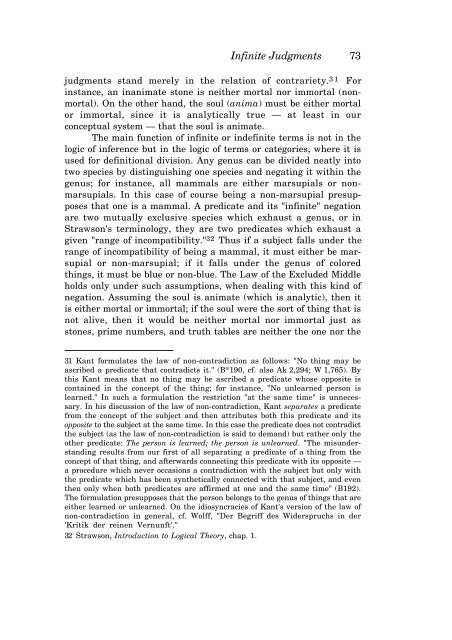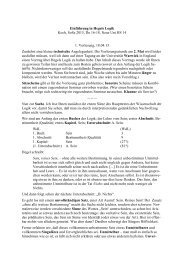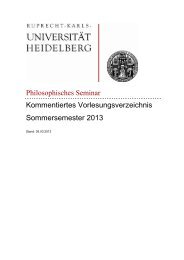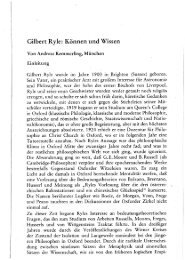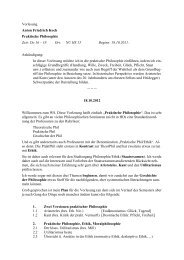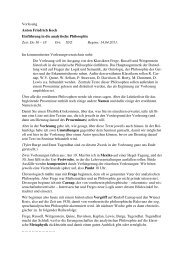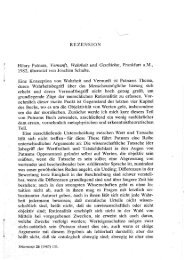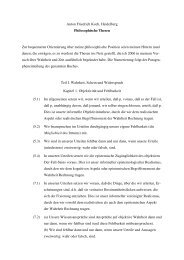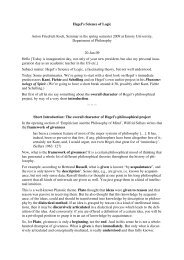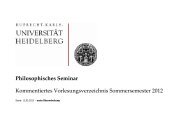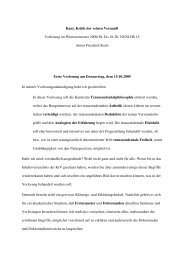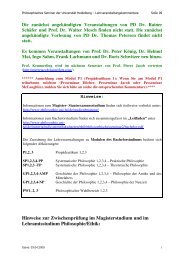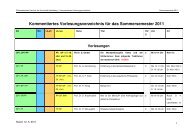KANT'S CRITIQUE OF TELEOLOGY IN BIOLOGICAL EXPLANATION
KANT'S CRITIQUE OF TELEOLOGY IN BIOLOGICAL EXPLANATION
KANT'S CRITIQUE OF TELEOLOGY IN BIOLOGICAL EXPLANATION
You also want an ePaper? Increase the reach of your titles
YUMPU automatically turns print PDFs into web optimized ePapers that Google loves.
Infinite Judgments 73<br />
judgments stand merely in the relation of contrariety. 3 1 For<br />
instance, an inanimate stone is neither mortal nor immortal (nonmortal).<br />
On the other hand, the soul (anima) must be either mortal<br />
or immortal, since it is analytically true — at least in our<br />
conceptual system — that the soul is animate.<br />
The main function of infinite or indefinite terms is not in the<br />
logic of inference but in the logic of terms or categories, where it is<br />
used for definitional division. Any genus can be divided neatly into<br />
two species by distinguishing one species and negating it within the<br />
genus; for instance, all mammals are either marsupials or nonmarsupials.<br />
In this case of course being a non-marsupial presupposes<br />
that one is a mammal. A predicate and its "infinite" negation<br />
are two mutually exclusive species which exhaust a genus, or in<br />
Strawson's terminology, they are two predicates which exhaust a<br />
given "range of incompatibility." 32 Thus if a subject falls under the<br />
range of incompatibility of being a mammal, it must either be marsupial<br />
or non-marsupial; if it falls under the genus of colored<br />
things, it must be blue or non-blue. The Law of the Excluded Middle<br />
holds only under such assumptions, when dealing with this kind of<br />
negation. Assuming the soul is animate (which is analytic), then it<br />
is either mortal or immortal; if the soul were the sort of thing that is<br />
not alive, then it would be neither mortal nor immortal just as<br />
stones, prime numbers, and truth tables are neither the one nor the<br />
31 Kant formulates the law of non-contradiction as follows: "No thing may be<br />
ascribed a predicate that contradicts it." (B*190, cf. also Ak 2,294; W 1,765). By<br />
this Kant means that no thing may be ascribed a predicate whose opposite is<br />
contained in the concept of the thing; for instance, "No unlearned person is<br />
learned." In such a formulation the restriction "at the same time" is unnecessary.<br />
In his discussion of the law of non-contradiction, Kant separates a predicate<br />
from the concept of the subject and then attributes both this predicate and its<br />
opposite to the subject at the same time. In this case the predicate does not contradict<br />
the subject (as the law of non-contradiction is said to demand) but rather only the<br />
other predicate: The person is learned; the person is unlearned. "The misunderstanding<br />
results from our first of all separating a predicate of a thing from the<br />
concept of that thing, and afterwards connecting this predicate with its opposite —<br />
a procedure which never occasions a contradiction with the subject but only with<br />
the predicate which has been synthetically connected with that subject, and even<br />
then only when both predicates are affirmed at one and the same time" (B192).<br />
The formulation presupposes that the person belongs to the genus of things that are<br />
either learned or unlearned. On the idiosyncracies of Kant's version of the law of<br />
non-contradiction in general, cf. Wolff, "Der Begriff des Widerspruchs in der<br />
'Kritik der reinen Vernunft'."<br />
32 Strawson, Introduction to Logical Theory, chap. 1.


